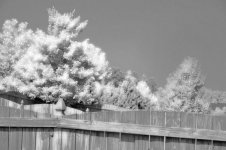dave lackey
Veteran
Okay, so I am almost finished with a project that has kept my M3 and R4 dedicated to specific films for the duration. I had picked up a roll of Ilford SFX 200 in hopes of doing some infrared. Will this film do that?
If so, I need a lot of coaching on this. I have the infrared filter (Leitz Rm) for the Summarit lens and will be ready to go in a couple of weeks.
Your kind and gracious help, as always, is appreciated.:angel:
If so, I need a lot of coaching on this. I have the infrared filter (Leitz Rm) for the Summarit lens and will be ready to go in a couple of weeks.
Your kind and gracious help, as always, is appreciated.:angel:
Last edited:







